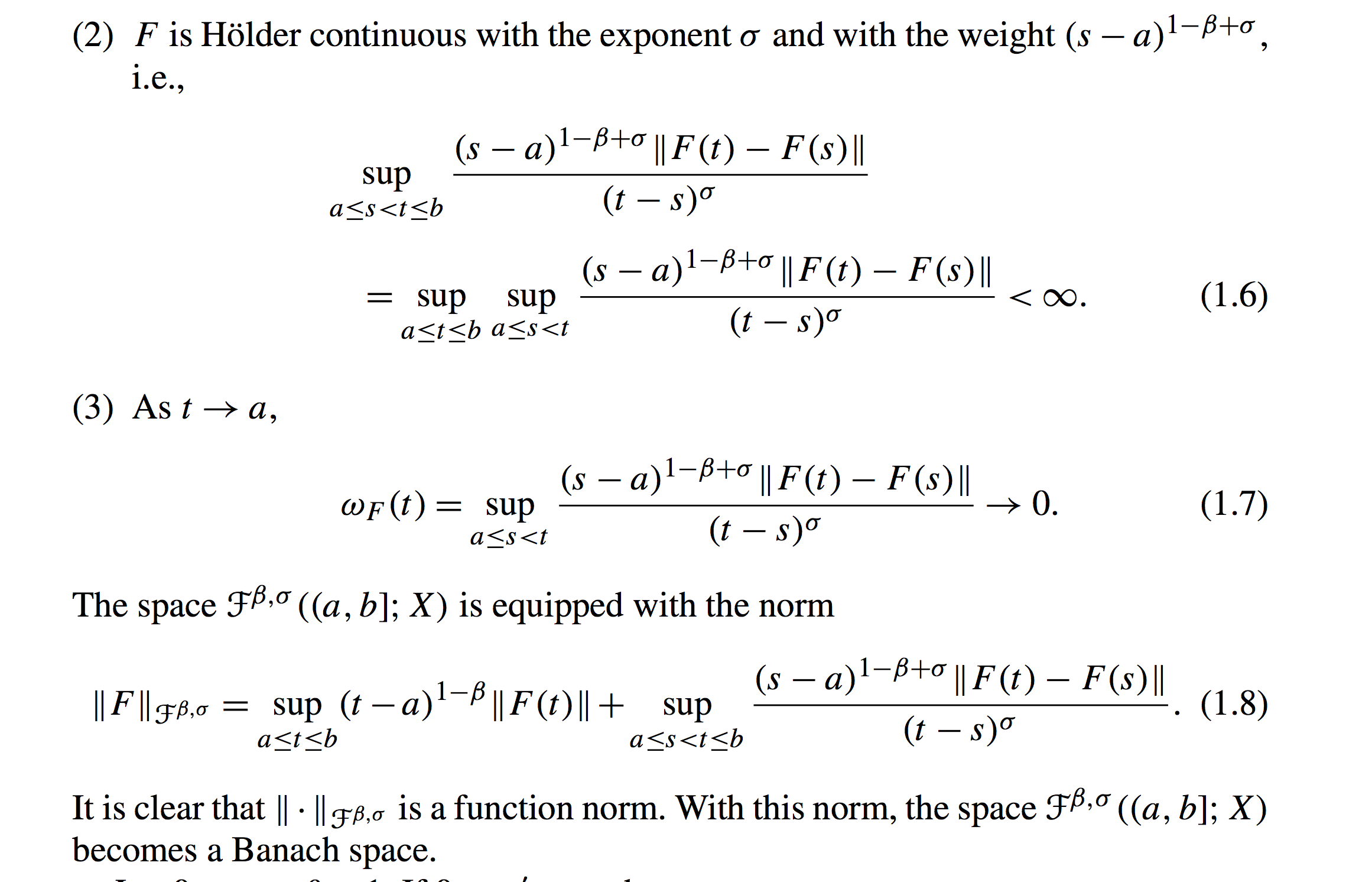Let
- $T>0$
- $H$ be a separable $\mathbb R$-Hilbert space
- $u_0\in H$
- $(e_n)_{n\in\mathbb N}\subseteq\mathcal D(A)$ be an orthonormal basis of $H$ with $$Ae_n=\lambda_ne_n\;\;\;\text{for all }n\in\mathbb N$$ for some $(\lambda_n)_{n\in\mathbb N}\subseteq(0,\infty)$ with $$\lambda_{n+1}\ge\lambda_n\;\;\;\text{for all }n\in\mathbb N$$
- $S(t):=e^{-tA}$ with $$e^{-tA}x:=\sum_{n\in\mathbb N}e^{-t\lambda_n}\langle x,e_n\rangle_He_n\;\;\;\text{for }x\in H$$ for $t\ge 0$
- $f:H\to H$ with $$\left\|f(x)\right\|_H\le L(1+\left\|x\right\|_H)\;\;\;\text{for all }x\in H\tag1$$ and $$\left\|f(x)-f(y)\right\|_H\le L\left\|x-y\right\|_H\;\;\;\text{for all }x,y\in H\tag2$$
Note that $S$ is a $C^0$-semigroup on $H$ and $-A$ is the infinitesimal generator of $S$.
It's well known that there is a unique $u\in C^0([0,T],H)$ with $$u(t)=S(t)u_0+\underbrace{\int_0^tS(t-s)f(u(s))\:{\rm d}s}_{=:\:v(t)}\;\;\;\text{for all }t\in[0,T]\tag 3\;.$$
Let $t\in (0,T)$ and $h\in[0,T-t)$. Then, $$\frac{v(t+h)-v(t)}h=\frac{S(h)-\operatorname{id}_H}hv(t)+\underbrace{\frac1h\int_t^{t+h}S(t+h-s)f(u(s))\:{\rm d}s}_{=:\:I_h(t)}\tag 4$$ with $$I_{\tilde h}(t)\xrightarrow{\tilde h\to0}f(u(t))\tag 5\;.$$
Question: What can we say about the regularity of $v$? Is $v$ (continuously) differentiable? And if so, in which sense is it a solution of $$\frac{{\rm d}v}{{\rm d}t}(\tilde t)=-Av(\tilde t)+f(u(\tilde t))\tag 6$$ for all $\tilde t\in[0,T]$?
The question arose as I read page 111 of An Introduction to Computational Stochastic PDEs. The authors claim that $u$ is not "smooth enough to interpret $(6)$ directly, as we don't know whether $u(t)\in\mathcal D(A)$".
Now, $$\frac{S(h)-\operatorname{id}_H}hv(t)=\int_0^t\frac{S(h)-\operatorname{id}_H}hS(t-s)f(u(s))\:{\rm d}s\tag 7$$ and (since $S(t-s)f(u(s))\in\mathcal D(A)$ for all $s\in[0,t)$) $$\frac{S(\tilde h)-\operatorname{id}_H}{\tilde h}S(t-s)f(u(s))\xrightarrow{\tilde h\to0}-AS(t-s)f(u(s))\;\;\;\text{for all }s\in[0,t)\tag 8\;.$$ Since the convergence in $(8)$ is uniformly with respect to $s$ and $t$, the right-hand side of $(7)$ is convergent as $h\to0+$. Thus, the left-hand side of $(7)$ is convergent as $h\to0+$ and hence $v(t)\in\mathcal D(A)$ by the very definition of $\mathcal D(A)$.
So, we should be able to conclude $u(t)\in\mathcal D(A)$. Did I made any mistake or are the authors wrong?


